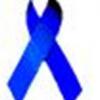http://www.ijcem.com...IJCEM812001.pdfChronic fatigue syndrome and mitochondrial dysfunctionSarah Myhill1, Norman E. Booth2, John McLaren-Howard3
1Sarah Myhill Limited, Llangunllo, Knighton, Powys, Wales LD7 1SL, UK; 2Department of Physics and Mansfield College, University of Oxford, Oxford OX1 3RH, UK; 3Acumen, PO Box 129, Tiverton, Devon EX16 0AJ, UK
Received
December 2, 2008; accepted January 12, 2009; available online January 15, 2009
Abstract: This study aims to improve the health of patients suffering from chronic fatigue syndrome (CFS) by interventions based on the biochemistry of the illness, specifically the function of mitochondria in producing ATP (adenosine triphosphate), the energy currency for all body functions, and recycling ADP (adenosine diphosphate) to replenish the ATP supply as needed. Patients attending a private medical practice specializing in CFS were diagnosed using the Centers for Disease Control criteria. In consultation with each patient, an integer on the Bell Ability Scale was assigned, and a blood sample was taken for the “ATP profile” test, designed for CFS and other fatigue conditions. Each test produced 5 numerical factors which describe the availability of ATP in neutrophils, the fraction complexed with magnesium, the efficiency of oxidative phosphorylation, and the transfer efficiencies of ADP into the mitochondria and ATP into the cytosol where the energy is used. With the consent of each of 71 patients and 53 normal, healthy controls the 5 factors have been collated and compared with the Bell Ability Scale. The individual numerical factors show that patients have different combinations of biochemical lesions. When the factors are combined, a remarkable correlation is observed between the degree of mitochondrial dysfunction and the severity of illness (P<0.001). Only 1 of the 71 patients overlaps the normal region. The “ATP profile” test is a powerful diagnostic tool and can differentiate patients who have fatigue and other symptoms as a result of energy wastage by stress and psychological factors from those who have insufficient energy due to cellular respiration dysfunction. The individual factors indicate which remedial actions, in the form of dietary supplements, drugs and detoxification, are most likely to be of benefit, and what further tests should be carried out.
Key Words: Chronic fatigue syndrome; myalgic encephalomyelitis; mitochondria; neutrophils, oxidative phosphorylation.












